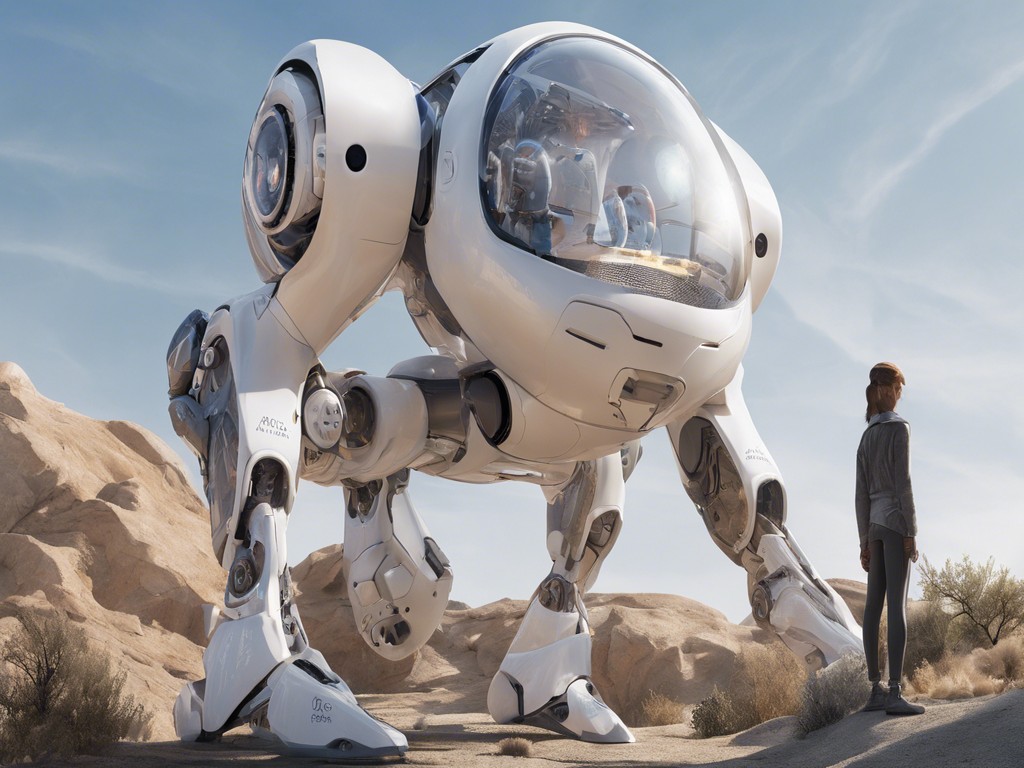In an era defined by groundbreaking developments in artificial intelligence (AI), Google’s latest revelation, Project Astra, at I/O 2024, stands as a testament to the future of AI. This monumental announcement captivates attention with its futuristic vision and signifies a significant leap toward how AI might shape our understanding of technology, automation, and everyday life.
The unveiling of Project Astra has sparked conversations among tech enthusiasts and industry professionals alike, focusing on its potential to redefine AI tools, platforms, and applications globally.
The following article offers an in-depth look at Project Astra, exploring its key features, capabilities, and the innovative technology powering it. From demonstrating its application through jaw-dropping demos to discussing its real-world applications, the significance of Project Astra in ushering in a new era of AI is thoroughly examined.
Furthermore, insights will be provided into its prospects, availability, and how it aligns with current AI trends, such as AI assistants, large language models, and collaborative AI agents. This analysis aims to illuminate the path forward in AI technology and its integration into futuristic cities and lifestyles by highlighting the project’s groundbreaking approach to AI development.
Overview of Project Astra
What is Project Astra?
Project Astra is Google’s innovative step into the future of AI, serving as a visual chatbot that extends the capabilities of Google Lens. It enables users to interact with their surroundings novelly by pointing their phone cameras at objects and asking questions. This AI tool has been designed to have a refined spatial and contextual understanding, allowing it to provide information on various subjects.
From identifying the town you are to understanding code on a computer screen or generating creative band names for your dog, Project Astra’s versatility is showcased through its voice-powered interactions. This interaction is not limited to smartphones but is also compatible with smart glasses, enhancing its utility in real-world applications.
The vision behind Project Astra
Google’s ambition with Project Astra is to create a multimodal AI assistant that revolutionizes how AI interacts with the world. This assistant is about responding to voice commands and interpreting sight, sounds, and text to offer a holistic assistance experience.
By combining these elements, Google aims to develop an AI that operates in a more human-like manner. The vision is to have an AI that can watch, understand, and interact with its environment through your device’s camera, making it a universal AI agent for everyday life. This project is a blend of Google Assistant and Google Gemini, with added features to provide a natural, conversational experience.
The ultimate goal is to create a conversational AI that understands context, remembers past interactions, and can take real-time actions, setting a new benchmark for AI tools and their application in daily life.

Key Features and Capabilities
Multimodal Functionality
Project Astra stands out with its ability to process and combine different types of data, such as text, images, video, and audio. This multimodal functionality allows users to interact with their devices in more natural and intuitive ways.
For example, pointing a phone’s camera at an object not only identifies it but can also
provide information or perform actions related to it. This capability extends to understanding drawings and text through the camera system, offering responses that are contextually relevant and conversational.
Real-time Interaction
One of the core strengths of Project Astra is its real-time responsiveness. Whether it’s recognizing objects in view or engaging in a dialogue about them, Astra’s processing speed and ability to understand the context in real-time are remarkable.
Demonstrations have shown it running on a phone, using camera input to interact naturally with users, identifying speakers, and even recognizing components highlighted by an arrow drawn on the screen. This level of real-time interaction makes it a step up from existing AI tools.
Memory and Contextual Understanding
Astra’s ability to remember conversations from the past and understand the context of interactions sets it apart. It boasts a long context window, enabling it to handle complex conversations and remember details over time.
This feature, coupled with it’s understanding of intent and ability to recall past interactions, allows for more fluid and natural conversations. Users can expect a more personalized and efficient service, as it can perform tasks proactively based on its understanding of the user’s needs and surroundings
Demos and Real-world Applications
AI-based Storytelling and Descriptions
Project Astra’s demos have showcased its ability to create engaging stories and provide detailed descriptions based on visual inputs. At the Google I/O event, Astra demonstrated modes like “Storyteller,” using visible items to craft narratives, and “Pictionary,” where it accurately recognized user-drawn objects.
This innovative approach allows for a more interactive experience than traditional AI, transforming everyday objects into characters of a story or game participants.
Identifying and Analyzing Real-world Objects
1. Object Identification: In a media briefing, it identified various objects, such as a speaker, by processing the camera input. When asked about specific
parts, like the tweeter of a speaker, it provided precise explanations, showcasing its detailed understanding of objects in its vicinity.
2. Contextual Responses: Astra’s “visual memory” enables it to remember and locate items not in the immediate view, such as glasses on a desk. This feature
was highlighted when it recalled the location of the user’s glasses, demonstrating an advanced level of contextual awareness.
3. Practical Suggestions: The AI also offered practical advice, like improving system speed by adding a cache between the server and database. This capability
to provide actionable solutions based on visual analysis underscores Astra’s utility in real-world applications.
These demonstrations reveal Project Astra’s potential to revolutionize how we interact with technology, making AI an integral part of our daily lives through
multimodal interactions and real-time processing.
Future Prospects and Availability
Expected Release Timeline
For now, Google has shared that Project Astra is still in its early stages of development, with no immediate plans for a public launch. This innovative project remains an in-house research tool, focusing on learning and improvement.
Over the past year, AI development has seen rapid advancements, moving from simple large language model bots to AI assistants capable of remembering the location of objects in a room. This progression highlights the potential of AI in transforming daily life and work but also indicates that Project Astra is not yet ready for consumer use.
Potential Hardware Integrations
Despite its current status as a research project, there is speculation about the integration of Project Astra’s features into consumer devices. Google’s collaboration with industry giants like Qualcomm and Samsung to develop a mixed reality platform suggests a strong commitment to advancing AI and AR fields.
The possibility of incorporating Astra into smart glasses, reviving the Google Glass concept with a powerful AI twist, has been teased. Such integration could position Google as a formidable competitor against other smart glasses in the market, like Meta’s Ray-Ban smart glasses.
Additionally, some of Project Astra’s capabilities are expected to be integrated into the Gemini app and web experience later this year, hinting at a future where AI assistants become an integral part of our daily lives.
Conclusion
Reflecting on the points discussed, Google’s Project Astra emerges not just as another leap in the field of AI but as a beacon for the future integration of AI into our daily lives. Through its impressive capabilities such as multimodal functionality and real-time interactive prowess, it sets a new benchmark in how we can communicate with, understand, and navigate our world.
The innovative project, still in its infancy, paints a promising picture of what lies ahead in AI development, emphasizing the profound impact it could have on technological advancement and daily convenience.
The significance of Project Astra extends beyond its current state of development, heralding a future where AI could act not just as a tool but as a companion in our day-to-day interactions. As Google continues to refine and enhance Astra, the prospect of its integration into wearable technology and other consumer devices signals a transformative shift in AI’s role in society.
While there’s anticipation for its public release and potential applications, Project Astra already marks a pivotal step towards realizing a future where AI enriches every facet of our lives, setting the stage for an exciting era of technological evolution


